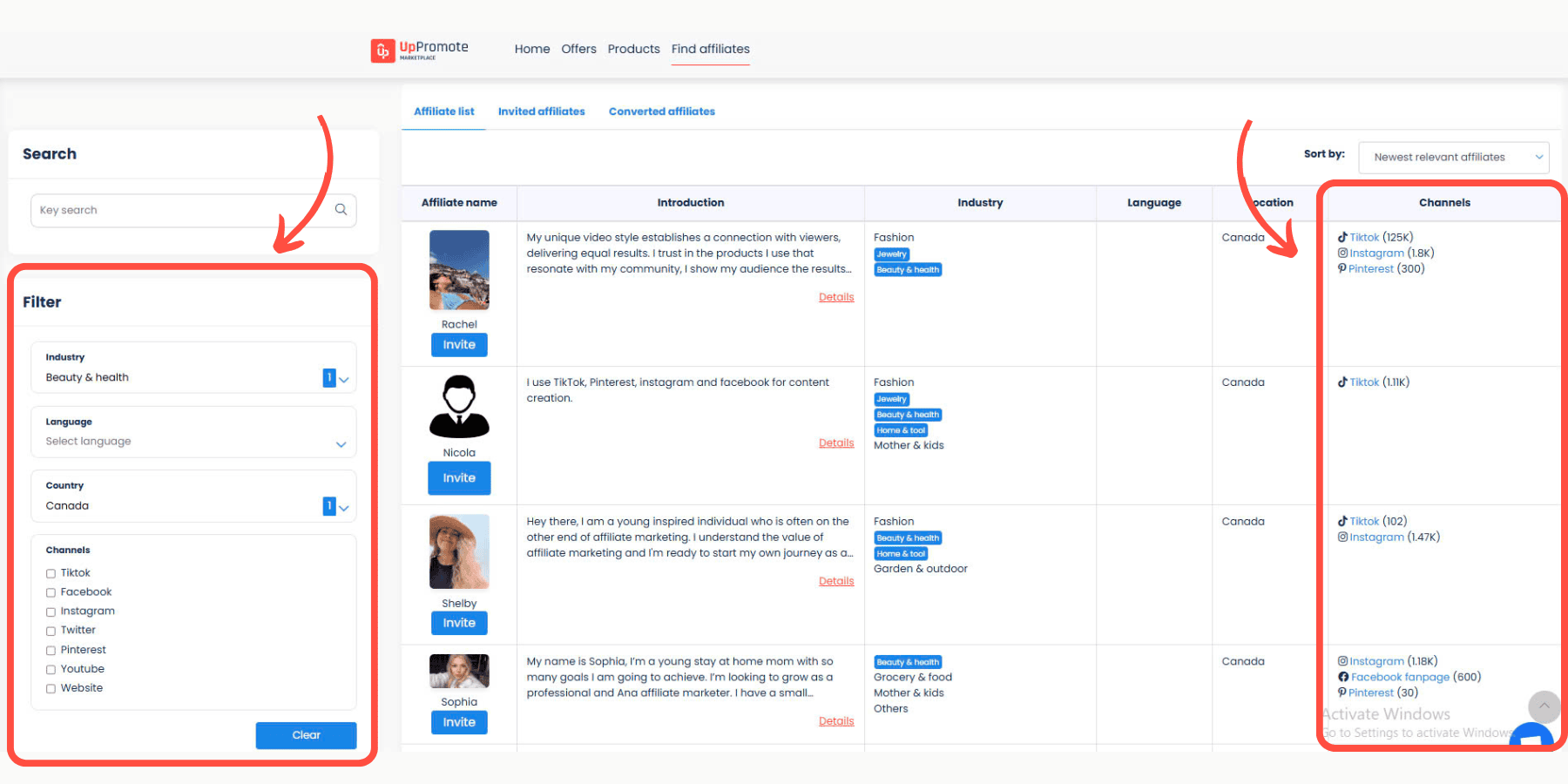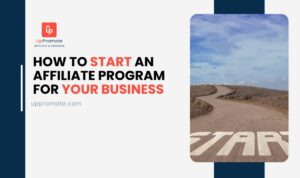Affiliate marketing is competitive—everyone’s fighting for the best partners and sales. Want to get ahead? Looking at what your competitors are doing, especially who they’re working with, can give you useful ideas. It’s a smart way to find inspiration to grow your affiliate team and make your program even better.
Of course, figuring out who is promoting your rivals is not easy. So, it’s fine if you don’t know where to begin.
In this article, we’ll show you the reasons why you should know competitors’ affiliates, 9 effective ways to find them, and some suggestions for finding partners of other brands within your niche.
Do you want to build, run, and optimize your affiliate program yourself to outperform those of your rivals’ and even attract their affiliate partners? Check out UpPromote, the top-recommended affiliate marketing software on Shopify, trusted by experts and over 115,000 users worldwide to start.
UpPromote surpasses competitors as the #1 Shopify affiliate app, providing a powerful solution to keep you ahead in affiliate marketing.
Why Knowing Your Competitors’ Affiliates Matters
Figuring out who is promoting your competitors’ products and services gives you valuable insight into your competitors’ strategies and then strengthens your affiliate campaign.
Key benefits of this research include:
- Identify high-performing affiliates: Study publishers generating significant traffic and sales for your competitors. Bringing these proven performers to your program can open doors to new audiences and expand your market reach. You can tweak your program—like offering better commissions, easier payment options, or more useful promotional materials—to convert them into your partners.
- Learn strategies from rivals’ campaigns: Understand what type of affiliates they work with and analyze the content, marketing channels, and promotional tactics their partners use. Identify successful strategies and adapt them to your own affiliate program.
- Discover potential partnerships: Look for affiliates who are not currently working with your competitors but fit your brand and target audience. Reach out to them and invite them to join your program.
- Monitor competition performance: Keep a close eye on your competitors’ affiliate activities to assess their performance and recognize potential threats. This awareness helps you spot market shifts early and adjust your program to stay competitive.
9 Effective Ways to Find Your Competitors’ Affiliate Partners
You can do research on competitors’ partners even before creating your own affiliate program. Doing so helps you better understand the affiliate marketing landscape in your industry and gives you valuable insights to recruit the right affiliates for your campaign later on.
The following are 9 practical ways you can try:
1. Conduct Competitor Name Searches on Search Engines
Start with popular search engines like Google or Bing. Sounds simple, right? But it’s actually one of the most effective ways to find out who is promoting your competitors.
Begin by listing your main competitors within your niche. Begin by listing your main competitors within your niche. Next, search using keywords like your competitors’ names + “review,” “discount,” and “discount code.” Or, look for your rivals’ product names + “reviews.” These searches often lead you to affiliate-created content, such as review sites or bloggers.
For example:
If you own an organic skincare brand in the US and Juice Beauty is one of your competitors, try searching Google for terms like:
- Juice Beauty reviews
- Juice Beauty discount code
These queries will bring up blog posts, review articles, and websites endorsing Juice Beauty’s products or collections.

To determine if these sites are Juice Beauty affiliates, click the links in the search results and browse their content. Check if any discount codes or external links redirect to Juice Beauty’s website and if the URLs have UTM parameters. If they do, it’s a strong sign that these sites are affiliates of the brand.

Bonus tips:
Focus your search on the first two pages of results to save time. These higher-ranking results are usually from affiliates with quality content and strong SEO. They also tend to drive higher traffic to your competitors.
2. Set Up Google Alerts
Google Alerts is a free, automatic tool that enables you to track mentions of your competitors, potentially revealing their affiliate partnerships.
To set up alerts, use your competitor’s brand name or product name as keywords. This ensures you’ll receive an email whenever new content mentions them, giving you timely insights into who is promoting your rivals.
For instance, if you run a US travel company, you may want to see how your competitor, Contiki Tours, collaborates with affiliates. You can create an alert for “Contiki.”
Here’s how to set it up:
- Go to Google Alerts and type the keyword or phrase you want to track (e.g., “Contiki”). Use quotes to get exact matches.
- Review the preview results displayed by Google Alerts. Click “Show options” to customize your alert by frequency, sources, language, region, and the number of results you want to see.
- Enter your email address to receive the alerts, or select the RSS feed option. Then, click “Create Alert.” Google Alerts will start sending you emails whenever it finds new content matching your keywords.

When reviewing the alerts, check the content and links for:
- Mentions of affiliate links or tracking codes.
- Coupons or discount codes linked to your competitor.
- Referral or promotional language that indicates affiliate relationships.
This method helps you identify which websites or bloggers are acting as affiliates for your rival.
3. Monitor Social Media Mentions
Social media platforms like Instagram, Facebook, or TikTok can tell you a lot about your competitors’ affiliate partnerships.
There are 2 ways for your consideration:
- Search hashtags or mentions tied to your rivals’ brand
- Use the brand mention tools
Search hashtags or mentions tied to your rivals’ brands
Simply start by using branded hashtags along with ones that disclose partnerships (e.g., #ad, #sponsored). You’ll likely find posts and videos reviewing or showcasing your competitor’s products, often accompanied by promotional links or affiliate discount codes.
Go ahead and search for #prettylittlething on Instagram if you are interested in finding lifestyle influencers and fashionistas partnering with PrettyLittleThing. This platform will give you a lot of content related to your search. Then, you can click on reels or posts to check if these accounts are brand ambassadors.

Use the brand mention tools
Another way to track brand mentions across social media platforms is by using social listening tools.
Popular tools like Hootsuite, Brand24, BuzzSumo, and Mention can help you find who shares and talks about your competitors.
Suppose you own a cosmetic and makeup brand, and one of your competitors is Glossier. By using Hootsuite, you can enter “Glossier” into the search bar within the listening dashboard. It will show many discussions about the company on YouTube, Facebook, TikTok, and more. From there, follow the links to identify who might be Glossier’s affiliates.
 Bonus tips:
Bonus tips:
You can check the likes, comments, and shares on posts and videos from affiliates promoting your competitors. This will show you how engaging their content is.
4. Review Competitor’s Affiliate Program Details
Checking your competitor’s website for information about their affiliate program is another approach you can try.
Many of them have a dedicated affiliate signup page where they share how to join, the perks they offer, and sometimes even testimonials from their affiliates. This can give you clues about who might be promoting their products.
Some brands, like Clickbank, even run competitions and display their best performers on leaderboards. Joining their program could give you more detailed insights into their top partners and the results they achieve.

Bonus tips:
Joining your competitors’ affiliate campaigns can give you insights from an affiliate’s view, such as:
- The way they manage affiliate programs using affiliate marketing management software or networks
- The affiliate signup experience
- Key terms and conditions of their program
- Details of their onboarding process
- Tools and resources provided to affiliates
- Strategies used to support and engage partners
- Rewards and incentives offered to motivate affiliates
Write down all key information that might be useful for comparing later in your affiliate competition analysis.
Join 115,000+ UpPromote users to create dynamic commission structures that outsmart your competitors.
5. Explore Affiliate Networks
A large pool of affiliates join networks like ShareASale, CJ Affiliate, Rakuten Advertising, or UpPromote Marketplace to connect with brands for collaboration. So, browsing these networks is a great way to not only find partners who fit your business but also see if any affiliates are already promoting products like yours.
For instance, you can easily view affiliate profiles when joining UpPromote Marketplace.
Within the network, you can filter the affiliate list by industry, language, or country to find the most relevant publishers. Then, check their websites or social media (like Instagram and TikTok). See if they’ve shared content promoting other regional companies in the same field.

6. Discover Affiliate Marketing Forums and Communities
Affiliate marketing forums and communities are great places where marketers come together, share tips, and discuss different programs, which also include those run by your competitors. You may join these forums to get useful clues about which affiliates work with your rivals.
You can check out popular forums, like Warrior Forum and Affilorama, or join groups on LinkedIn, Facebook, or Reddit that focus on affiliate marketing. These spaces are full of discussions relevant to your niche that can help you find affiliates who are already promoting your competitors’ products.

Bonus tips:
Along with joining affiliate marketing forums and communities, you should also explore ones related to your niche. These are often places where affiliates of other brands share their products and special deals.
7. Examine Advertising Campaigns
Looking at sponsored messages and ads on social networks and Google is one great way to find your competitors’ affiliates. Comparing sites, review sites, bloggers, and influencers who promote a rival’s ads are often their partners.
If you are running an affiliate program for your web hosting service, you may want to find out what affiliates promote other companies within your niche. Try searching in Google with a niche query such as “best web hosting.”
You will see quite a few publishers who use the paid advertising option to list content that features competitors’ products on the search results page, like comparison websites like Top10.com or ComparingWebHosting.com.

8. Analyze Backlinks with SEO Tools
Backlinks are great indicators of who promotes your competitors.
With the help of tools like Ahrefs, SEMrush, or Moz, you can carry out a deep backlink analysis of your rivals. By putting in a competitor’s domain, these tools generate a list of all the sites linking to it, many of which may be the rival’s affiliate partners.
What if BarkBox is competing with you in the pet product field? Well, you can run a check on its backlinks using SEMrush, for example.
Simply enter BarkBox’s website URL, and the tool will generate a list of all the sites linking to it. It might look something like this:

Bonus tips:
Check your rivals’ backlinks to see which ones are high-quality and might contain affiliate IDs or specific parameters in their URL.
9. Use Referral Traffic Analysis
If you have access to competitive analytic tools like SimilarWeb, you can have a comprehensive view of any website’s traffic sources.
As you input a competitor’s site, SimilarWeb will display referral traffic sources. From there, you can dive into the “Referrals” tab and see which websites link to the rival, which often includes its affiliates.
In our example below, you can see that Kit, a popular email marketing tool, received about 700,000 referral visits from 1,627 sites between September and November 2024 with SimilarWeb. You also know the domains and industries of the referral sites and how much traffic they’re sending to Kit. From there, you can easily view, analyze, and identify which sites might be Kit’s affiliate partners.

How to Find Competitor’s Affiliates in Your Niche
Every industry is unique. Its target audience and sales cycle can be different. And so can the types of affiliate marketers.
Tailoring your research is a smart tactic to find competitors’ affiliates in your niche effectively.
The following are some suggestions for you to consider:
Health and Wellness
In terms of health and wellness, customers prefer reviews and health tips before buying. So, the affiliate types that most companies in this industry often collaborate with could be lifestyle bloggers, review sites, fitness trainers, health experts, and health apps.
Here’s what you can try to find other brands’ affiliates:
- Conduct Google searches. Use keywords like “[Competitor Name] supplement review” or “[Competitor Name] fitness program results” to find blogs and review sites talking about your competitors’ fitness equipment, supplements, or health apps.
- Use backlink analysis tools, like Ahrefs or SEMrush, to identify health-focused websites that link to your competitors.
- Leverage referral traffic analysis solutions, such as SimilarWeb, to know which affiliate sites drive traffic to your competitors’ store websites.
- Use hashtags and keywords related to competitors’ brand names or products to search on social media platforms, like Instagram or TikTok, to find posts, videos, or reels sharing about these topics. Also, you can use brand-mention tools to find out who is discussing them on YouTube or X.
Apparel and Fashion
For apparel and fashion, customers love trends and discounts. Thus, many bands partner with social media influencers and coupon sites. They use them to promote their latest collections and hot deals.
To look for competitors’ affiliates in this niche, you can consider the following options:
- Perform a search on Google. Type terms like “[Competitor Name] discount code” or “[Competitor Name] promo code” to find websites sharing exclusive offers from your rivals.
- Search hashtags or keywords related to your competitors’ brands on social media, especially on Instagram and TikTok. Look for influencers who create posts or videos about outfits featuring your rivals’ items and share discount codes.
Beauty and Skincare
Beauty and skincare fans love checking out product reviews, tutorials, and before-and-after content before deciding what to buy. Of course, they’re also on the lookout for good deals while shopping.
In this niche, beauty bloggers, lifestyle influencers, review sites, and deal platforms are some of the most common affiliate marketers. If you’re running a beauty brand and want to see who’s promoting your competitors, here’s how you can start:
- Doing Google searches is a good idea. Enter the queries, such as “[Competitor Name] reviews,” “[Competitor Name] best products,” or “[Competitor Name] before and after,” to identify which review sites and bloggers mention your rivals. Also, use the keyword “[Competitor Name] discount code” to know which affiliates provide coupon codes from the brand.
- Leverage brand-mention tools and social media. Tools like Brand24 or Mention can help you track mentions of your competitors. You can also search hashtags or keywords associated with your rivals on Instagram, YouTube, and TikTok. Both methods can reveal influencers sharing skincare routines and makeup tips featuring your rivals’ products.
- Join affiliate networks and filter the beauty niche to generate a list of relevant affiliates. Then, check their profiles and social media accounts to see if they’ve worked with other brands in your industry.
Tech and Gadgets
Tech bloggers, YouTube reviewers, review sites, and comparison sites are popular affiliates of this niche. To find out which ones are partnering with your competitors, you can think about the following options:
- Search for keywords. Use terms like “[Competitor Name] unboxing” or “[Competitor Name] review” on Google and YouTube to uncover tech affiliates and comparison sites.
- Use backlink tools. Solutions like SEMrush or Ahrefs can help you identify websites linking to your competitors’ products.
- Join tech forums on Facebook or Reddit. Engage with discussions about the latest gadgets, product reviews, and recommendations to find members actively promoting competitors’ products and sharing affiliate links or affiliate discount codes.
Final Words
Finding your competitors’ affiliates is an important part of analyzing the competition in affiliate marketing. It can take time and effort, but it’s worth it.
With this guide, we hope you can find these affiliates more easily and spot the ones who already understand your audience and fit well with your brand. These are the partners who can help you grow your program.
Take the first step and gradually discover how to turn your competitors’ affiliate connections into a win for your business.







